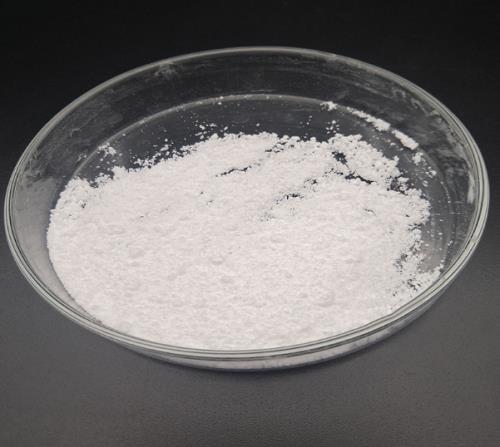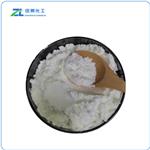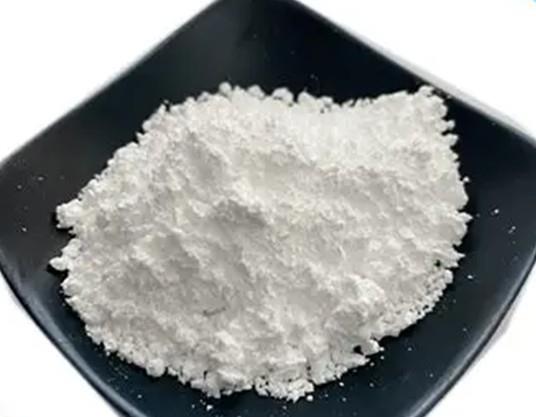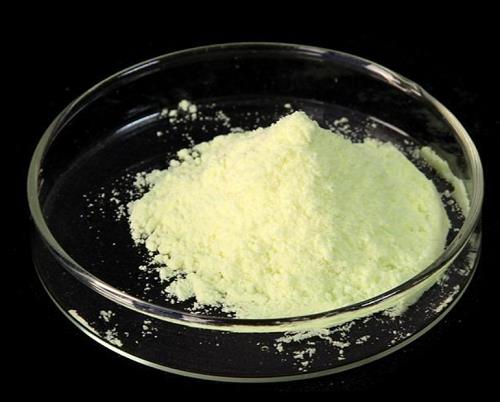Multifunctional Applications of Tellurium Dioxide
Tellurium dioxide, also known as tellurium(IV) oxide, is a white, crystalline solid with a melting point of 1,130 °C and a boiling point of 1,850 °C. It is an important material in a number of applications, including as a catalyst in the synthesis of plastics resins, and pharmaceuticals, and as a component in tellurium-based alloys. It is typically made at high temperatures either by decomposition of tellurium(IV) chloride or tellurium(IV) sulfate in the presence of oxygen. Tellurium dioxide is used to prepare tellurium metal, telluric acid, and many tellurium salts. It may also be used in the preparation of Ag2Te nanoparticles.

Efficiency of 124I radioisotope production from tellurium dioxide
Radiotracers used in nuclear medicine diagnostics are substrates of normal physiological pathways (activated probes) or localize to particular targets because of specific binding interactions (targeted probes). This work consists of the semi-empirical Monte Carlo simulations and the empirical approach involving the experimental production of 124I from the natural Tellurium Dioxide. Geant4 toolkit was applied for simulating the 124I production from the natural and enriched Tellurium dioxide targets and using various proton energy degrading foils: Havar, Molybdenum and Aluminum, as well as two proton currents: 10 μA and 15 μA. The role of the simulation parameters, such as protons energy, beam current, target material, beam energy degraders, their thicknesses and irradiation time was analyzed and optimized since these are the main sources of systematic errors and cumulative energy shifts. The production process starts from inserting ca. 400 mg of the 124TeO2 + Al2O3 mix (5-7wt% of aluminum oxide) into the cavity using the TERIMO module, an automatic module for separation the iodine radionuclides from the irradiated tellurium oxide targets.[1]
As revealed from the SRIM/TRIM and Geant4 simulations, for the natural 124Tellurium dioxide targets irradiated with 14.8 MeV proton beams, the thicknesses >0.8 mm are required to markedly reduce the energy of the bombarding particles or to completely absorb the bombarding beam. A too thin layer would make protons fly through it without 124I production, whereas a too thick one unnecessarily increases the costs of the production, especially in the case of tellurium enriched 124Tellurium dioxide, and the risk of the target overheating. Moreover, because the dry distillation is used to separate 124I from the disk, the thickness of the material cannot be too great. In natural TeO2 124I has a maximum cross-section at >14 MeV—so is produced very close to the surface of the target and diffuses out faster compared to 130I, which has its maximum cross-section at much lower energy and is, thus, produced deeper in the target. The separation process adds, however, to the discrepancy between the theoretical and experimental values of the yields. The distillation efficiency depends on the temperature, the flow rate of the transporting gas, and the operating time. When the radioisotope loss during the separation is included in the calculations, the experimental values are closer to the simulated ones, at least for the proton beam of 10 μA.
Hybrid silicon-tellurium dioxide DBR resonators
Laser-based sensing is an alternative approach which relies on changes in the ultra-narrow emission line(s) of an active resonator instead of shifts in the transmission of a passive structure. Tellurium dioxide is another attractive rare-earth host material for silicon photonics due to its relatively higher refractive index (n ∼2.0–2.1), low loss, relatively high rare earth solubility, and low temperature deposition. TeO2 has been applied in on-chip optical amplification and lasing directly on silicon, which makes it prospective for laser-based SOI sensors. In addition to its recent demonstration as a cladding for high quality factor resonators and monolithic laser material on SOI via incorporation of rare-earth dopants, the high refractive index of the Tellurium dioxide cladding enables the mode to be ‘pulled’ up to the top layer where sensing occurs for better sensitivity. Here we report on the design, fabrication, optical properties, and sensor results of functionalized PMMA coated hybrid Si-TeO2 waveguides with distributed Bragg reflector (DBR) cavities. Two Si DBR designs are characterized and compared with a variety of cladding materials including PMMA, TeO2 and CYTOP, as well as a combination of deposited Tellurium dioxide and spin-coated PMMA.[2]
Improved hybrid sensor designs and active resonators will be investigated based on this initial demonstration. Using plasma functionalized PMMA as a biological interface layer in combination with rare-earth doped Tellurium dioxide is a novel prospective approach to hybrid laser sensors for silicon photonic platforms. We have demonstrated the fabrication and characterization of a PMMA coated Si-TeO2 hybrid DBR waveguide sensor for biological applications. Two Si DBR designs were designed and fabricated using a standard silicon photonic foundry process which enables low cost, volume production. The transmission response of the DBRs was investigated around 1550 nm for a variety of top-cladding materials and the quality factors for PMMA coated Si-TeO2 devices were measured yielding values of 1.82 and 1.12 × 105 for SW and MP devices, respectively.
Tellurium Dioxide Crystal Shear Acoustic Wave Attenuation
Tellurium dioxide (TeO2) crystal is one of the most important acousto-optic materials to date. Due to its combination of a high acousto-optic (AO) quality factor and a wide optical transparency band, this material is widely used in acousto-optic applications. TeO2 is well known for its extremely high acoustic and acousto-optic anisotropy. The most commonly used mode is the slow shear wave along the [110] axis, with a slow velocity along this axis. This results in a very high AO quality factor, which is critical for acousto-optic devices, and significantly reduces the acoustic power required to achieve high diffraction efficiency. Therefore, the cut angles used for TeO2 in AO devices typically do not exceed 20° from the [110] axis. The strong acoustic anisotropy of Tellurium dioxide crystals results in a non-uniform acoustic power distribution, which can introduce errors in conventional acousto-optic testing methods. In this study, we propose a general method to measure the acoustic power distribution along the propagation direction of acoustic waves in non-collinear acousto-optic tunable filters (AOTFs).[3]
References
[1]Bzowski P, Borys D, Gorczewski K, Chmura A, Daszewska K, Gorczewska I, Kastelik-Hryniewiecka A, Szydło M, d'Amico A, Sokół M. Efficiency of 124I radioisotope production from natural and enriched tellurium dioxide using 124Te(p,xn)124I reaction. EJNMMI Phys. 2022 Jun 6;9(1):41. doi: 10.1186/s40658-022-00471-1. PMID: 35666325; PMCID: PMC9170869.
[2]Bonneville DB, Albert M, Arbi R, Munir M, Segat Frare BL, Miarabbas Kiani K, Frankis HC, Knights AP, Turak A, Sask KN, Bradley JDB. Hybrid silicon-tellurium-dioxide DBR resonators coated in PMMA for biological sensing. Biomed Opt Express. 2023 Mar 17;14(4):1545-1561. doi: 10.1364/BOE.485824. PMID: 37078058; PMCID: PMC10110299.
[3]Mi Z, Zhao H, Guo Q, Yu Y, Liang Y. Evaluation of the Tellurium Dioxide Crystal Shear Acoustic Wave Attenuation at 40-140 MHz Frequency. Materials (Basel). 2024 Aug 16;17(16):4082. doi: 10.3390/ma17164082. PMID: 39203260; PMCID: PMC11356753.
You may like
Lastest Price from Tellurium dioxide manufacturers

US $10.00/KG2025-04-21
- CAS:
- 7446-07-3
- Min. Order:
- 1KG
- Purity:
- 99%
- Supply Ability:
- 10 mt

US $79.00-38.00/kg2025-04-21
- CAS:
- 7446-07-3
- Min. Order:
- 1kg
- Purity:
- 99%
- Supply Ability:
- 20ton


